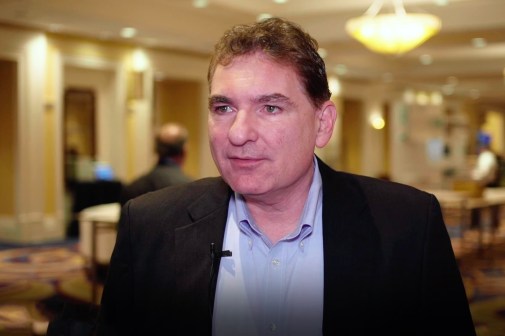What workforce problem? Nebraska staffs enterprise services team with recent graduates

In pursuit of meeting a legislative mandate, the State of Nebraska’s technology office has stumbled onto one of its most influential changes in years.
Required by law to build a single, searchable website to manage all of the state’s receipts, spending and contracts, the Office of the Chief Information Officer turned to recent graduates of local community colleges to run a team that officials say is not only bringing new efficiency and functionality to agencies, but is driving sustained cultural change within state government.
There were a lot of different ways the state could have handled its enterprise content management (ECM) project, but state Chief Information Officer Ed Toner said the chosen path is working out so well that he’s not even worried about an aging IT workforce anymore.
Like many major operational changes in state government, the seed for this project was planted years ago and grew only slowly before finally being given the water and sunlight it needed to thrive. Officials said they first became interested in an ECM around 2009. But it wasn’t until 2013 that the state legislature required the state to build such a system, and when work began, it mostly consisted of hiring outside contractors to manage a system that middled along, merely meeting the legal requirement. It wasn’t until 2015, Toner said, that the state made the project its own.
“We’ve flipped to where now almost all development is now done internal to the state,” Toner said.
The state got rid of its external contractors and doubled the size of the team by hiring internally — two-thirds of a 29-person ECM team now consists of full-time state employees who were formerly interns. State employees on the ECM team cost $72 per hour less than the contractors that were being used previously, Toner said.
Beyond cost savings, the young team has also provided the state a dose of “youthful enthusiasm,” he said.
“We benefit culturally because they bring a lot of energy to everyone they come in contact with,” Toner said. “The quality of the work they’re getting is tremendous and the fact that we haven’t had a single resignation on that team kind of speaks for itself right there. They must like working for us as much as we like having them.”
The team’s enthusiasm comes with new skills for government, like agile, an iterative development methodology generally considered to be more flexible and cost-efficient than traditional development approaches.
“We’re organically growing our agile development because other teams are starting to interact with our millennial force and finding out that agile isn’t that mysterious black box,” Toner said. “It’s something we can actually do.”
Now that the ECM system’s main development has been completed, said Caleb Wederquist, the CIO office’s lead developer, the state is enjoying the benefits it provides as more agency leaders pay attention to how it can serve their businesses. As team lead for the ECM project, Wederquist is among the younger hires himself, having started with the state in 2011.
“Having the portal live gave a lot of visibility into what ECM can do and the speed that they could turn it around and the flexibility it provided,” Wederquist said.
An internal ECM training session in 2016 saw approximately 60 percent growth in attendance since it was previously held in 2014, Wederquist said. Twenty-two state agencies now use the system, which hosts more than 66 million documents. As the team has made its work more visible, people have gotten a hint of what’s possible, he said, and they want to know more about what the the CIO’s office is doing.
And what they’re doing is making the state’s contracts and spending more transparent and accessible.
“People have on-demand access to these contracts and can go look at any of them at any time and get the information on them and view them from anywhere in the world,” Wederquist said.
Before the ECM, it took a call to the appropriate office, and someone would “dig around through a file” to find the physical paper record — and how long that took was highly variable, Wederquist said.
“One agency might have known exactly where that record is and in a day or two might have gotten back,” he said. “Another agency you might have called, you might have had a request open for weeks.”
While the ECM system has been completed, the team continues adjusting backend processes and has expanded its role beyond a content provider to an enterprise services provider as the state adjusts to its recent IT consolidation. Bringing together the state’s technology infrastructure also brought on organizational changes officials said they didn’t originally anticipate. While some — like the Department of Transportation — consolidate operations, consolidation has led the Department of Veterans’ Affairs to split its business units apart. Having all the state’s services and data in two data centers is allowing agencies to settle into their optimal arrangements, Toner said.
The restructuring is also a function of the new tools they have available, like the ECM, Toner said — having all of the state’s technology assets located in one place is revealing smarter ways to work, and ECM’s young team is bringing fresh ideas to spur that along.
“The state was willing to invest in these young folks and they more than paid off,” Toner said. “And heck, it’s just fun to have them around.”





